#aeroclub
Explore tagged Tumblr posts
Text
The Sonora Aeroclub: A Lost Legacy of Anti-Gravity, Secret Societies, and Suppressed Technology?
Could it be that the secrets of anti-gravity were discovered long before the age of rockets and jets? Hidden deep in the California hills in the mid-1800s, a group called the Sonora Aeroclub emerged, gathering under a cloak of secrecy and experimentation. Fuelled by dreams of harnessing unconventional energy sources, these aeronautic pioneers reportedly designed and even tested aircraft that seemed far ahead of their time.
But why haven’t you heard about them?
A Secret Society with a Visionary Mission:
The Sonora Aeroclub wasn’t just a ragtag group of tinkerers—they were part of a larger movement, allegedly linked to a German secret society known as the Nyctameron. Driven by a mysterious figure named Karl Honig, the Aeroclub met in secret workshops where they sketched and assembled highly advanced airships.
Their designs featured strange propulsion systems they called “NB gas,” a form of anti-gravitational energy that, by their account, could defy Earth’s pull without the need for massive engines or fossil fuels.
These weren’t just ideas on paper. Sketches and manuscripts uncovered years later by researcher Charles A. Dellschau reveal elaborate blueprints for these crafts, some resembling modern stealth designs and drones, drawn nearly 150 years ago. Why would a hidden society in a remote gold-mining town design advanced flying machines? And more importantly, how could they know about propulsion concepts that our mainstream science has only recently begun to entertain?
The Curious Case of “NB Gas” and Anti-Gravity:
One of the most intriguing elements of the Aeroclub’s designs was their purported use of “NB gas.” This mysterious substance, claimed by the Sonora Aeroclub members to have anti-gravity properties, was key to their aviation experiments. Today’s alternative energy community will recognise this as one of the earliest recorded theories of “buoyancy control” and anti-gravitational force—concepts the mainstream still struggles to explain.
Could “NB gas” have been an early understanding of zero-point energy? Or perhaps even a rudimentary form of electromagnetic lift technology? These are questions that modern physicists and researchers ask as they reexamine the Sonora Aeroclub’s work. Some believe that if such a breakthrough were indeed discovered, it would have posed a direct threat to fossil fuel industries and conventional aircraft manufacturers—a threat that powerful interests might have wanted to bury.
Dellschau’s Hidden Messages: Proof of Suppressed Technology?
One of the few remaining clues to the Aeroclub’s existence and innovations lies in the cryptic, annotated artwork of Charles Dellschau. Decades after the Sonora Aeroclub allegedly disbanded, Dellschau created a collection of heavily illustrated, code-filled journals that documented their experimental airships in exquisite detail. Filled with esoteric symbols, encrypted notations, and bizarre engineering notes, Dellschau’s work has led many to believe he was hiding something monumental in plain sight.
Researchers who have studied Dellschau’s journals suggest that the Nyctameron and the Sonora Aeroclub may have been part of a broader network seeking to develop technology that could one day free humanity from conventional energy constraints. If true, it’s no wonder that these journals remained obscure for decades—who stands to gain from the suppression of anti-gravity and alternative propulsion technologies?
Why Haven’t We Heard About This?
It’s a question that leaves room for intrigue. Some believe the Sonora Aeroclub’s anti-gravity experiments were intentionally buried by powerful industrial and government interests. The sudden disappearance of the Aeroclub, the lack of public record on their achievements, and the coded nature of Dellschau’s journals suggest that whatever knowledge they possessed was either hidden—or taken.
Did the Sonora Aeroclub Discover Anti-Gravity?
Today, the legend of the Sonora Aeroclub fascinates the alternative propulsion and energy community. Could they have stumbled upon anti-gravity principles that remain elusive even now? Or were they silenced before they could transform the world?
As breakthroughs in aerospace technology inch closer to the concepts the Aeroclub imagined, people are asking: Did we lose a key to a cleaner, faster future somewhere in California’s backwoods? Dellschau’s cryptic journals, filled with strange symbols and forgotten blueprints, may still hold answers. And perhaps, if we look closely, we’ll find a glimpse of the secrets they tried to leave behind.




2 notes
·
View notes
Text
yesterday was fun. Learned I've been working on a plane owned by one of the captains of Miss Piggy the Hurricane Hunter. And she wants to let a friend of both of ours to exercise her plane while she's busy with work (like cars and parts/orings/seals on planes go bad if they're unused). Lowkey being invited to fly along. Just might. Free cirrus flight time???? >w>
Also been invited to tag along with a bunch of sky gals flying to New Orleans for a big pilot party in a couple months.
#also we had some talks about getting an aeroclub jumpstarted bc all. of the flight school planes are constantly booked. ;_;#i guess im never escaping the general aviation scene here. not like i wanted to escape tho. its fun here :'3
10 notes
·
View notes
Text
Campeonato Nacional de Acrobacia Aérea acontece no Aeroclube de Tatuí
0 notes
Text

1928 De Havilland DH60 Moth Newcastle Aeroclub School of Flying poster
76 notes
·
View notes
Text
Milestone Monday


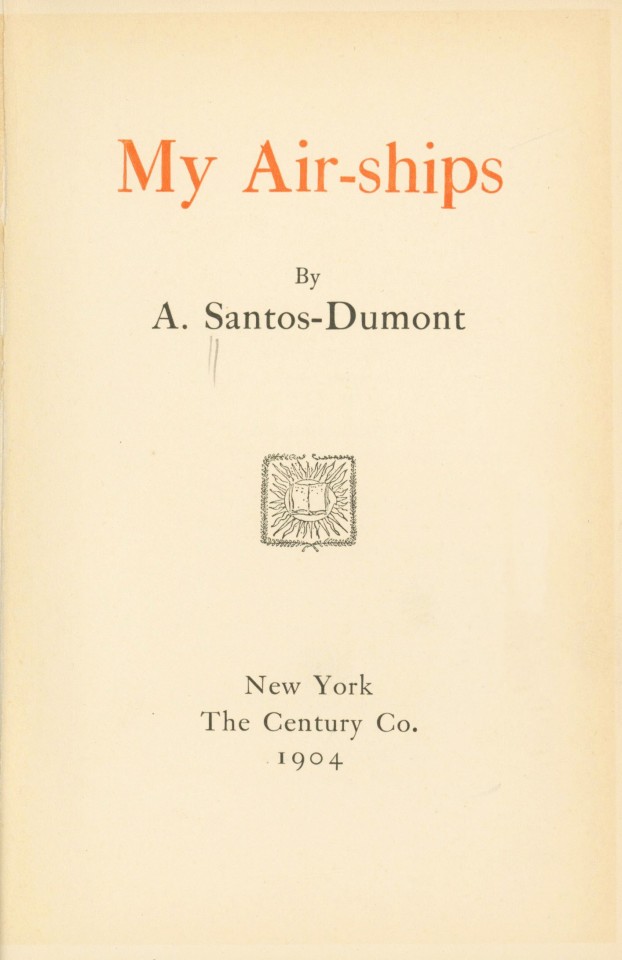
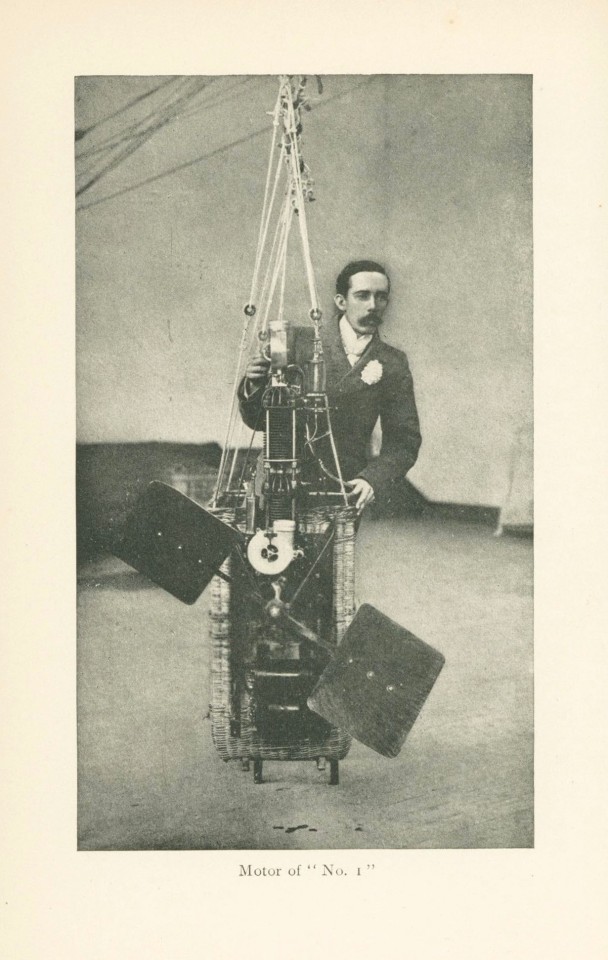
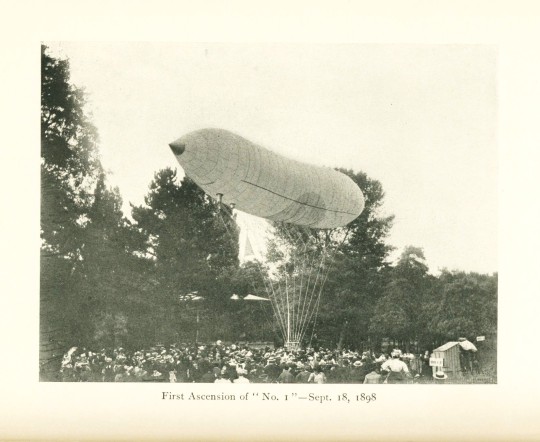
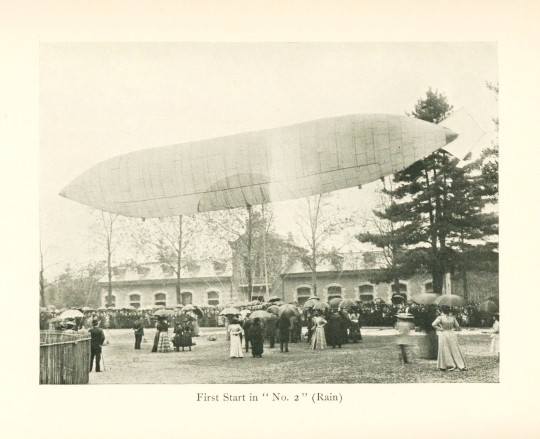



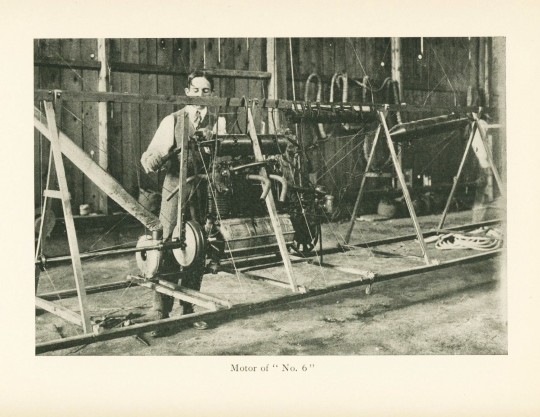
On this day, October 23, 1906, aeronaut Alberto Santos-Dumont (1873-1932) flew his biplane 14-bis for 50 meters at an altitude of about four meters. 14-bis, also known as Oiseau du Proie or “Bird of Prey,” was a powered heavier-than-air machine that took off unassisted by an external launch system at the Bagatelle Gamefield in Paris. This was one of the first heavier-than-air flights certified by the Aeroclub of France and recognized by the Fédération Aéronautique Internationale.
In celebration of this momentous shift within aerodynamics, we are exploring Santos-Dumont's earlier flights through his autobiography My Air-Ships published in New York in 1904 by The Century Company. Santos-Dumont's first experiments with flight were conducted in lighter-than-air balloons, oblong shaped and filled with buoyant gas. He conveniently named them numerically No. 1- No. 10 and kept detailed records of the successes and failures of each balloon.
Most notably was Santos-Dumont's flight No. 6 in 1901 when he flew around the Eiffel Tower. The flight took 29 minutes and 30 seconds and awarded him the Deutsch Prize. The flight is heavily documented in his autobiography along with all of Santos-Dumont's lighter-than-air designs and airships.
My Air-Ships features a lovely publisher's binding, is a gift of George Hardie, and is part of the George Hardie Aerospace Collection at UW-Milwaukee.
View other Milestone Monday posts.
– Jenna, Special Collections Graduate Intern
#milestone monday#milestones#alberto santos-dumont#biplane#my air-ships#airships#deutsch prize#the century company
90 notes
·
View notes
Text

Raymonde de Laroche (1882 – 1919)
De Laroche became the world’s first female pilot when she received the 36th license issued by Aeroclub de France on March 8th, 1910. In celebration of her accomplishment, Women Of Aviation Week is held every March. In 1913, she won the Fermina Cup for making a record-breaking non-stop flight–four hours long! Before her death in a 1919 crash, she also won awards for altitude and distance.
#Raymonde de Laroche#world’s first female pilot#pilot#aviator#Female Pilot#Women in aviation#Aviation Pioneers#Aviation history#flying
11 notes
·
View notes
Text

De Havilland DH60 Moth Newcastle Aeroclub School of Flying 1928
10 notes
·
View notes
Text



"🇱🇹😢 Executed in Moscow by occupants in 1941
In 1898 on March 26 Antanas Gustaitis was born in the village of Obelinė, Javaravas township, Marijampolė county, Suvalkai governorate.
The entire birth of Lithuanian aviation is connected with him. Just imagine: from a student in the first batch of the Military Aviation School in 1919 to the chief of military aviation, a brigadier general and a famous aircraft designer who created 10 successful plane designs. Most of his planes were produced in series and formed the basis of the Lithuanian military aviation equipment park.
Aviation enthusiast and popularizer Antanas Gustaitis also contributed to the activities of the Lithuanian Aeroclub. He was elected as the vice-chairman of its board, handed over to the club that no longer used service planes "Albatros" and "ANBO-II" that had graduated from the Military Aviation. As a cheaper way to fly he offered the Aeroclub to take the lead in gliding. He got from the leader of gliding (at the time Germany) the first glider drawings and organized the first glider in the Military Aviation Workshop. He also sent junior aviation lieutenant Gregor Heidrikis to Germany to train as a gliding instructor, encouraged young glider constructors and sent them to study at foreign universities.
The fate of this bright personality is tragic. In 1940 the Soviet occupiers forced him to sign the liquidation documents of the beloved military aviation he had created and nurtured. After refusing to serve the occupier's army in 1941, he was arrested on October 16. and shot in Moscow. He was trying to escape knowing his fate with all his plane drawings but was caught by russians near Lithuanian border.
Aviation enthusiasts have not forgotten his work. While mentioning of him during the censorship of the Soviet occupation, was not allowed. Aviators could speak openly about him after the restoration of Lithuania's Independence. Several books have been published, a documentary film and several television shows have been produced, the VGTU Aviation Institute is named after Antanas Gustaitis, and enthusiasts are trying to restore his previously created structures. The Lithuanian Aviation Museum also preserves and nurtures exhibits related to the life and activities of Antanas Gustaitis - from photos, pilot's gloves, to ANBO drawings of airplanes included in UNESCO's Lithuanian National Register "Memory of the World".
Lithuania was the only one among the small European states that produced combat planes at that time.
Antanas Gustaitis planes ANBO means "Antanas Nori Būti Ore" ( Antanas wants to be in the air ).
In the first photo: Antanas Gustaitis in the cockpit of the ANBO plane near his parents' farmhouse. ~1926
Second and third Antanas with his planes
Credit to Lithuania's Aviation Museum."
4 notes
·
View notes
Text

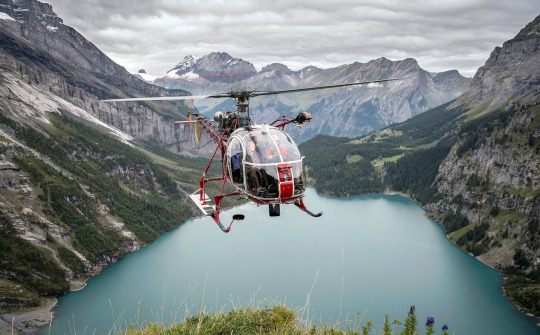

“Ich habe in Venezuela viel verhandelt, das stimmt, aber ich habe dort auch eine neue Leidenschaft entdeckt: das Fliegen.
Man muss wissen, dass meine Familie und ich in unserer Freizeit zwei Aktivitäten hatten: den Berg und das Meer.
Um die Kondition für die Aufstiege zu erhalten, erklomm ich jeden Morgen um 6 Uhr den Berghang des Avilas, des Bergmassivs über Caracas. Der Strand war dem Wochenende vorbehalten. Ich hatte mein Offshore-Boot in Porto La Cruz verankert, mehr als 300 Kilometer vom Caracas entfernt. Jeden Freitagabend nach der Arbeit nahm ich das Auto, um stundenlang auf steilen Straßen zu fahren - es gab noch keine Autobahn- und endlich gegen 23 Uhr am Hafen anzukommen, auf dem Boot zu schlafen und am nächsten Morgen bi La Tortuga zu navigieren, eine erhaltene und unbewohnte Insel ein unberührtes Stück Natur. Trotz der beiden Motoren des Bootes brauchte es zwei Stunden Navigation, um an der Insel anzudocken, wenn das Wetter günstig war. Und wenn das Meer unruhig war, konnte man fünf Stunden brauchen! Eine immer sportliche und manchmal ziemlich mühsame Strecke. Und dann, am Sonntagabend, musste ich auf der gleichen Route nach Caracas zurückkehren…
An einem Samstag, an dem die Überquerung besonders schwierig gewesen war, ruhte ich mich ein bisschen am Ufer aus, als ich ein Flugzeug brummen hörte, es sich nähern und elegant auf dem Strand landen sah. Ich ging zum Piloten, um zu fragen, woher er kam. "Von Caracas, ich bin vor 25 Minuten gestartet."
Ich war verblüfft. Ich komme her für den Tag, präzisierte der Pilot. Am Ende des Nachmittags kehre ich zurück nach Hause. Und ich, ich verbrachte Stunden im Auto und Stunden auf dem Boot, um endlich diesen Strand zu erreichen! Am Montagmorgen, zurück in Caracas, meldete ich mich beim Aeroclub an: Ich wollte meine Pilotenlizenz so schnell wie möglich erwerben. Jeden Morgen besuchte ich sehr früh einen praktischen und theoretischen Kurs, und drei Monate später, nachdem ich 50 Stunden für meine Lizenz geflogen war, landete ich selbst auf dem Strand von La Tortuga!
Noch heute liebe ich das Fliegen innig! Der Start, das immer wechselnde Wetter, die Landung, die Handhabung des Flugzeugs, das weckt sehr starke Emotionen. Ich kaufte mir dann ein kleines Sechs-Plätze-Flugzeug, eine Cessna 206 Turbo, und entdeckte Venezuela von oben; die riesigen Wasserfälle von Salto Angel im Amazonas und die Weitläufigkeit des Canaimas im Süden des Landes … „
source: https://www.schweizer-illustrierte.ch/stars/schweiz/ex-nestle-chef-peter-brabeck-mit-helifliegen-ueberwand-ich-meinen-krebs
text: Aufstiege: Von den verschneiten Bergen bis zur Geschäftsleitung von Nestlé – eine Eroberung der Gipfel, Peter Brabeck-Letmathe
#eternal love#for#autobiography#Peter Brabeck-Letmathe#Aufstiege#flying#helicopter#pilot#aviation#Caracas#swizerland
4 notes
·
View notes
Text

Passeio que dei hoje no Aeroclube de Belém Novo, Poa-RS.
7 notes
·
View notes
Text

✈ 1.957. Aeródromo de Tablada, Sevilla.
📄 Grupo de alumnos de la escuela de aeromodelismo de Sevilla en el aeródromo de Tablada.
Puede verse a la izquierda el empenaje de un Heinkel 111 (Pedro).
A veces los pilotos del aeroclub, nos invitaban a volar con ellos de paquete.
Yo tuve la suerte de disfrutar de un rato inolvidable en una Bücker Jungmann.
#aero#aeromodelismo#aeromodelling#aeromodelo#airplane#airplane_lovers#glider#hobbie#hobbies#hobby#hobbyrc#madera#modelaircraft#modelismo#modelplane#retro#sevilla#sevillaenelrecuerdo#aerodromo#aerodromotobalaba#throwback
2 notes
·
View notes
Text
Aeronave cai em aldeia indígena de SP; uma pessoa morreu no local
A Rede VOA e o Corpo de Bombeiros confirmaram na noite deste domingo (9) a queda de uma aeronave modelo Cessna 150J do Aeroclube de Itanhaém (SP). A aeronave realizava um voo de instrução, com decolagem às 17h16. O alerta de pane foi dado às 17h42 e a queda ocorreu no interior da aldeia indígena Porungal, em Peruíbe. Uma pessoa morreu e, outra, ficou presa às ferragens, sendo em seguida levada…
0 notes
Text
Avião caiu logo após levantar voo, diz testemunha vizinha ao local
Casal morreu após a queda de um avião de pequeno porte na cidade de Quadras, no interior de São Paulo, na manhã deste sábado (15/2) São Paulo — O avião de pequeno porte que caiu na manhã deste sábado (15/2), em uma área de vegetação na cidade Quadras, região metropolitana de Itapetininga, interior de São Paulo, tinha acabado de levantar voo de um aeroclube (galeria de fotos) da região, segundo…
0 notes
Text

Mi-24 during a demonstration flight at the aeroclub airport in Łososina Dolna
0 notes
Text
Participo en B2B eCommerce Road (x) Córdoba
El pasado 4 de diciembre en el Real Aeroclub de Córdoba participé en la jornada de B2B ecommerce Road organizada por ecommerce news y Xeito Meeting.
Algunas de las empresas que participaron en el evento son: Alibaba, AJE Córdoba, Embacor, Bodegas Toro Albalá, Grupo Rochel, Patatas Raquel, Dolores Promesa, De Ruy, Soloepis, Climer, BigCommerce, TAKEFORTYTWO o Grupo Piedra

Y es que aunque algunos de los invitados pensaron que era más un monólogo al más puro stand-up comedy, mi planteamiento de ponencia iba encaminada a de una forma amena, repasar algunas de las grandes meteduras de pata que hemos cometido en Cartucho.es, es importante saber reirse de uno mismo, pero tomando decisiones. De esta manera arrancábamos con "Decisiones estratégicas en e-commerce para no morir de éxito: B2B vs B2C".
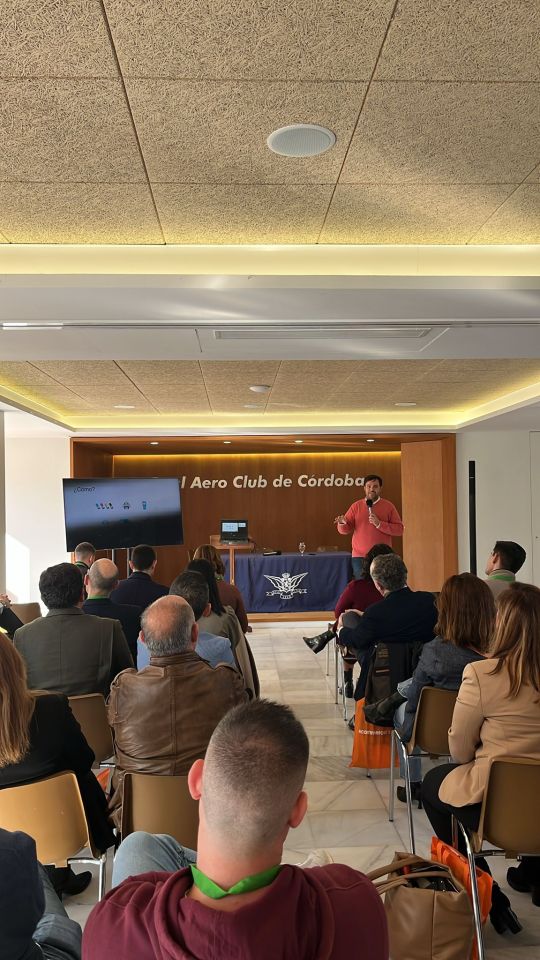
Los dos puntos más clave o recomendaciones en las que suelo incidir y desde los cuales se puede empezar a profundizar en detalles o plano táctico son:
Flujo de caja.
Escalabilidad vs operaciones.
Es desde aquí donde se observan las principales diferencias B2B vs B2C:
Operaciones: Almacén (pick&pack, optimizaciones logísticas), financiero (flujo de caja al tener pre y post pagos) y compras (rotaciones, eficiencia de dinero, no romper stock).
Marketing y Ventas: Web (¿Necesaria? ¿Personal capacitado?), canales de captación (adaptación al target y canales ad-hoc), gestión de relaciones y bbdd (no sólo email pero relación y gestión de CRM).
0 notes




